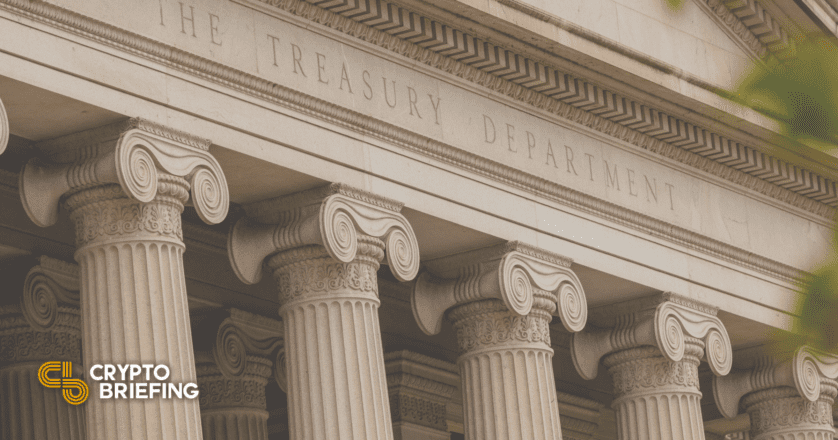Treasury Prepping Stablecoin Clampdown: Report
The Treasury’s comments are a precursor to policy decisions on crypto assets.

Key Takeaways
- Treasury officials have reportedly identified several risks posed by stablecoins.
- Officials are concerned about the rapid growth of pegged assets and the potential for them to cause financial instability.
- As stablecoins see increased use, regulators are quickly moving to regulate them.
Share this article
U.S. Treasury officials have reportedly identified several risks posed by stablecoins. The government body is set to make recommendations for stricter rules surrounding cryptocurrencies.
Treasury Weighs in on Stablecoins
Treasury officials have identified several ways that stablecoins could pose a risk to investors and the wider economy, Bloomberg reported Thursday.
According to anonymous sources cited in the report, ensuring that investors can reliably move money in and out of tokens is a top priority, whether through centralized or decentralized exchanges.
Additionally, the Treasury raised concerns about a market sell-off causing widespread financial instability and how certain stablecoins could scale up dangerously fast, outpacing national currencies. In particular, the sources expressed worry over the growth of tokens that are sponsored by tech giants like Facebook, which is currently developing its own stablecoin called Diem.
While the comments on stablecoins are currently little more than recommendations from the Treasury, officials are said to be discussing plans for a more formal review by the Financial Stability Oversight Council. If carried out, the council would closely assess whether stablecoins could pose an economic threat.
The regulatory attention being paid to stable, dollar-pegged assets is not unexpected. In July, U.S. Treasury Secretary Janet Yellen met with the Working Group on Financial Markets to discuss potential stablecoin regulations. The latest recommendations from Treasury officials indicate that regulatory decisions on stablecoins and the wider cryptocurrency market might be closer than anticipated.
Over the past several months, stablecoin providers have faced increasing pressure from regulators and the crypto community. The largest stablecoin by market capitalization, Tether, has long faced scrutiny over whether its USDT coins are adequately backed by cash. Additionally, Tether executives came under investigation by the Department of Justice in July over possible misconduct during the company’s early years.
Other stablecoin providers have not escaped inspection either. USD Coin, which is widely used on Coinbase, has recently been criticized for the lack of transparency regarding how its coins are backed. While Coinbase initially stated that “each USDC is backed by one U.S. dollar, which is held in a bank account,” the company has since updated its website to include cash equivalents in the backing.
Stablecoins form an integral part of the cryptocurrency ecosystem, providing a great deal of utility to those investing in digital assets or participating in decentralized finance. As such, U.S. regulators are quickly identifying the risks associated with stablecoins before they become more widely adopted.
Disclaimer: At the time of writing this feature, the author owned BTC, ETH, and several other cryptocurrencies including USDT.
